Related Research Articles
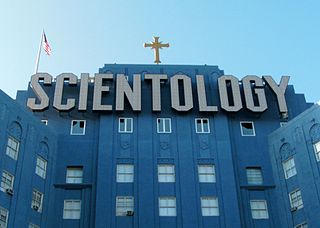
The Free Zone, Freezone, or more recently identified as Independent Scientology, comprises a variety of non-affiliated independent groups, organizations, and individuals who practice Scientology beliefs and techniques independently of the Church of Scientology (CoS). Such practitioners range from those who closely adhere to the original teachings of Scientology's founder, L. Ron Hubbard, to those who have adapted their practices far from CoS beliefs and practices.

The Church of Scientology maintains a wide variety of beliefs and practices. The core belief holds that a human is an immortal, spiritual being (thetan) that is resident in a physical body. The thetan has had innumerable past lives, some of which, preceding the thetan's arrival on Earth, were lived in extraterrestrial cultures. Based on case studies at advanced levels, it is predicted that any Scientologist undergoing auditing will eventually come across and recount a common series of past-life events.

The E-Meter is an electronic device used in Scientology that allegedly "registers emotional reactions". After claims by L. Ron Hubbard that the procedures of auditing, which used the E-Meter, could help heal diseases, the E-Meter became the subject of litigation. Since then, the Church of Scientology publishes disclaimers declaring that the E-Meter "by itself does nothing", is incapable of improving health, and is used solely for spiritual purposes.

In Scientology, Operating Thetan (OT) is a state of complete spiritual freedom in which one is a "willing and knowing cause over life, thought, matter, energy, space and time". The Church of Scientology offers eight "levels" of OT, each level costing thousands of US dollars. The OT levels are confidential and not revealed to Scientologists until they reach the third Operating Thetan level. In practice, the objective of these levels is to remove "body thetans" which are "confused, disembodied souls from other planets who have attached themselves to us".
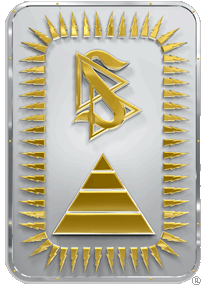
The Religious Technology Center (RTC) is an American non-profit corporation that was founded in 1982 by the Church of Scientology to control and oversee the use of all of the trademarks, symbols and texts of Scientology and Dianetics. Although RTC controls their use, those works are owned by another corporation, the Church of Spiritual Technology which is doing business as L. Ron Hubbard Library, registered in Los Angeles County, California.
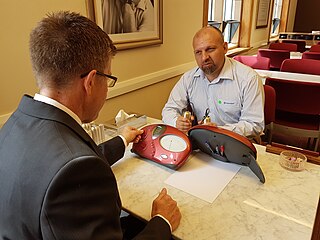
Auditing, also known as processing, is the core practice of Scientology. Scientologists believe that the role of auditing is to improve a person's abilities and to reduce or eliminate their neuroses. The Scientologist is asked questions about past events while holding two tin cans attached to an electrical resistance meter (galvanometer) with a dial. The term "auditing" was coined by L. Ron Hubbard in his 1950 book Dianetics: The Modern Science of Mental Health which describes the process. Auditing uses techniques from hypnosis that are intended to create dependency and obedience in the subject.
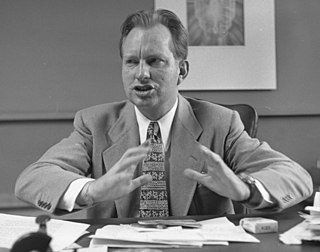
Scientology founder L. Ron Hubbard explicitly compared his teachings to the science-fiction subgenre space opera. In his writings, wherein thetans were reincarnated periodically over quadrillions of years, retaining memories of prior lives, to which Hubbard attributed complex narratives about life throughout the universe. The most controversial of these myths is the story of Xenu, to whom Hubbard attributed responsibility for many of the world's problems.

The Oxford Capacity Analysis (OCA), also known as the American Personality Analysis, is a list of questions which is advertised as being a personality test and that is administered for free by the Church of Scientology as part of its recruitment process. The organization offers the test online, at its local sites, and sometimes at local fairs, carnivals, and in other public settings. It has no relation to the University of Oxford, although the name may have been chosen to imply a link.
In Dianetics and Scientology, Clear is a status afforded to followers by the Scientology organization, or by other Scientologists, after they complete certain activities. It is one of the major ostensible "states" practitioners strive to reach on their way up what the Scientologists call the Bridge to Total Freedom. Scientology followers are given the status of Clear when a person is deemed to be free of the influence of engrams – supposed unwanted emotions or painful traumas which Scientology claims are not readily available to the conscious mind. Scientologists believe that human beings accumulate anxieties, psychosomatic illnesses, and aberration due to receiving engrams throughout their current or past lives, and that by applying Dianetics, every single person can obtain the status of Clear.
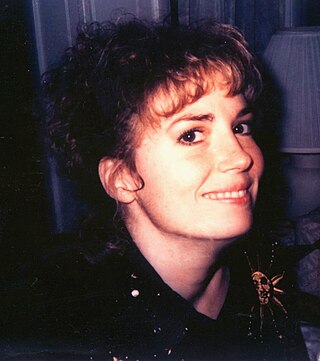
Since the founding of the Church of Scientology in 1954 by L. Ron Hubbard, the relationship between Scientology and psychiatry has been dominated by strong opposition by the organization against the medical specialty of psychiatry and of psychology with themes relating to this opposition occurring repeatedly throughout Scientology literature and doctrine. According to the Church of Scientology, psychiatry has a long history of improper and abusive care. The group's views have been disputed, criticized, and condemned by experts in the medical and scientific community and have been a source of public controversy.

Scientology ethics and justice are a collection of policies and procedures by L. Ron Hubbard and used by the Church of Scientology. Scientology defines ethics as "the actions an individual takes on himself", and justice as "the action taken on the individual by the group when he fails to take these actions himself". The body of writings include techniques and policies of moral choices, and the rules of conduct to be followed by scientologists.
When the individual fails to put in his own ethics, the group takes action against him and this is called justice.
In the 1950s and 1960s, a HASI was an organization where people would go for Scientology training, auditing, books, tapes, and e-meters. There were HASI organizations across the western world. The use of the word "HASI", pronounced "hah-zee" or "ha-zee", could refer to either a local organization or the international management corporation.
[L. Ron Hubbard] is governing director of Hubbard Association of Scientologists International, the operative company of the HASI, over which he exercises complete and autocratic control.

This is a Timeline of Scientology and its forerunner Dianetics, particularly its foundation and development by author L. Ron Hubbard as well as general publications, articles, books and other milestones.

This bibliography of Scientology includes Scientology and Dianetics-related books authored by L. Ron Hubbard and those produced by the Church of Scientology and its related organizations. Books compiled by the Church of Scientology and published after the death of Hubbard are usually indicated as "Based on the Works of L. Ron Hubbard". Books bearing L. Ron Hubbard's name are considered texts of Scientology's canon.
The amount of material on Dianetics and Scientology is extensive, to say the least. This material is composed of books by L. Ron Hubbard ; compilations of his works; taped lectures; auditor training materials ; course packages; booklets; a large number of magazines and annuals; and video recordings of the major annual events.

The Bridge to Total Freedom, also known as the Classification, Gradation and Awareness Chart, is Scientology's primary action plan and road map to guide a person through the sequential steps to attain Scientology's concept of spiritual freedom. Displayed in every Scientology organization as an enormous poster using red ink, the comprehensive chart contains almost every service available within Scientology. All steps on the Bridge cost money.

The relationship between Scientology and religious groups is very complex. While Scientology claims that it is fully compatible with all existing major world religions and that it does not conflict with them or their religious practices, there are significant contradictions between Scientology and most religions, especially the major monotheistic religions. Members are not allowed to engage in other similar mental therapies or procedures, religious or otherwise.

Scientology is a set of beliefs and practices invented by the American author L. Ron Hubbard, and an associated movement. It is variously defined as a cult, a business, a religion, a scam, or a new religious movement. Hubbard initially developed a set of ideas that he called Dianetics, which he represented as a form of therapy. An organization that he established in 1950 to promote it went bankrupt, and Hubbard lost the rights to his book Dianetics in 1952. He then recharacterized his ideas as a religion, likely for tax purposes, and renamed them Scientology. By 1954, he had regained the rights to Dianetics and founded the Church of Scientology, which remains the largest organization promoting Scientology. There are practitioners independent of the Church, in what is referred to as the Free Zone. Estimates put the number of Scientologists at under 40,000 worldwide.

The intersection of Scientology and abortion has a controversial history which began with Scientology founder L. Ron Hubbard's discussion of abortion in his 1950 book Dianetics: The Modern Science of Mental Health. Hubbard wrote in Dianetics that abortion and attempts at abortion could cause trauma to the fetus and to the mother in both spiritual and physical ways. Scientologists came to believe that attempted abortions could cause traumatic experiences felt by the fetus, which would later be remembered as memories referred to in Scientology as "engrams". In the Scientology technique called Auditing, Scientologists are frequently queried regarding their sexual feelings and behaviors. These questions about Scientologists' sexual behavior are often posed to members during "security checks", a specific form of auditing sessions where individuals are required to document their divergence from the organization's ethics. One of the questions asked in these security checks is, "Have you ever been involved in an abortion?".
References
- 1 2 3 4 5 Hubbard, L. Ron (7 February 1965), HCO PL 7 February 1965 KEEPING SCIENTOLOGY WORKING, Church of Scientology
- ↑ Hubbard, L. Ron (17 June 1965), HCO PL 17 June 1970RB Issue I TECHNICAL DEGRADES, Church of Scientology,
This PL and HCO PL 7 Feb. 65 must be made part of every study pack as the first items and must be listed on checksheets.
- ↑ Coombs, Roger (22 January 2008). "Cruise's flim-flam works for Scientology". The Daily Telegraph . Archived from the original on 5 September 2012.
- ↑ Bannerman, Lucy (16 January 2008). "Tom Cruise Scientology video tops Oprah moment". The Times. London. Archived from the original on 11 May 2008. Retrieved 13 August 2013.
- ↑ Henry, Emma; and agencies (17 January 2008). "Tom Cruise Scientology video leaked on web". The Daily Telegraph . London. Archived from the original on 21 May 2008. Retrieved 13 August 2013.
- ↑ Strickler, Jeff (17 January 2008). "Cruise Control". Star Tribune. Minneapolis,St. Paul. Archived from the original on 25 August 2012. Retrieved 7 May 2013.
- ↑ Bigliardi, Stefano (2016). "New Religious Movements, Technology, and Science: The Conceptualization of the E-meter in Scientology Teachings". Zygon . 51 (3): 668. doi:10.1111/zygo.12281.
- ↑ Kent, Stephen A.; Raine, Susan (2017). Scientology in Popular Culture: Influences and Struggles for Legitimacy. Santa Barbara, California: ABC-CLIO. ISBN 978-1440832499.
- ↑ The Technical Bulletins of Dianetics and Scientology (PDF), archived (PDF) from the original on 14 February 2019, retrieved 6 September 2016
- ↑ Reitman, Janet (2011). Inside Scientology: The Story of America's Most Secretive Religion. Houghton Mifflin Harcourt. p. 398. ISBN 9780618883028. OL 24881847M.
- ↑ Lewis, J. (2017). Lewis, James R.; Hellesoy, Kjersti (eds.). Handbook of Scientology. Vol. Brill Handbooks on Contemporary Religion. Brill. ISBN 9789004330542.
- ↑ 2004 Annual Report of the Office for the Protection of the Constitution (PDF), Federal Ministry of the Interior of the Federal Republic of Germany, p. 270, archived from the original (PDF) on 19 October 2007, retrieved 14 August 2013
- ↑ "Mitteilung der Landesregierung 5. Bericht der Interministeriellen Arbeitsgruppe für Fragen sogenannter Sekten und Psychogruppen" (PDF). Landtag Baden-Württemberg. 15 December 2000. p. 19. Archived from the original (PDF) on 27 September 2013. Retrieved 7 May 2013.
Die richtige Ausbildungseinstellung ist: "Du bist hier, also bist du ein Scientologe. Jetzt werden wir dich zu einem fachmännischen Auditoren machen, was auch immer geschieht. Wir haben dich lieber tot als unfähig.